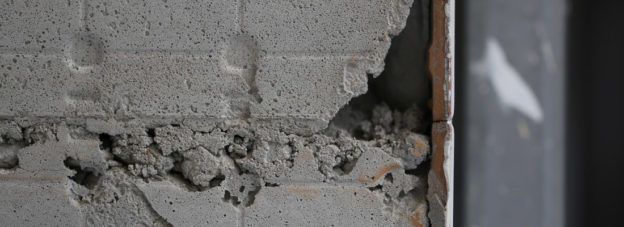While pursuing contractors and subcontractors separately can oftentimes be a strategic move in subrogation cases involving construction defects, attorneys must be aware that proceeding in a piecemeal fashion may result in claim preclusion in the later cases. In the case of Girolametti v. Michael Horton Assocs., 2019 Conn. LEXIS 172, 2019 WL 2559548, the Supreme Court of Connecticut considered whether the issuance of an arbitration decision involving the general contractor precluded subsequent claims against subcontractors who worked on the same project. The court held that, because the subcontractors were presumptively in privity with the general contractor for purposes of res judicata and there were no facts requiring the court to depart from that presumption, the doctrine of res judicata applied and precluded the plaintiff’s claims against the subcontractors.
In Girolametti, owners of a Party Depot Store, John Girolametti Jr. and Cindy Girolametti (collectively, Plaintiffs), hired general contractor Rizzo Corporation (Rizzo) to construct an expansion of their store. In doing so, the parties entered into a standard American Institute of Architects (AIA) construction contract (Prime Contract). Rizzo retained several subcontractors to work on the project.
Following the completion of the job, the parties had various disputes. Rizzo claimed Plaintiffs owed it money and Plaintiffs claimed damages associated with construction defects. Pursuant to the Prime Contract, the matter entered into arbitration. None of the subcontractors on the project were involved in the arbitration process. On the thirty-third day of what was slated to be a thirty-five day hearing, Plaintiffs declined further participation and did not present evidence of their damages. The arbitrator subsequently issued an award of $508,597 to Rizzo.
Plaintiffs filed two separate lawsuits – one during the arbitration process and one after – against Rizzo and its subcontractors involved in the design and construction of the project. The defendants moved for summary judgment on the grounds that the claims either had been or could have been raised at the arbitration and, thus, were barred by res judicata. The trial court granted Rizzo’s motion, but denied the other defendants’ motions. The Appellate Court reversed the trial court, holding that res judicata applied to all defendants and, consequently, Plaintiffs’ claims were barred. The Appellate Court based its holding on the rationale that all of the subcontractor defendants were in privity with Rizzo and, thus, Plaintiffs’ claims involving the subcontractors’ work could have been raised during the arbitration.
The Supreme Court examined several factors when it determined if the subcontractors were in privity with the general contractor. These factors included how closely their interests were aligned, if they shared legal rights, the parties’ reasonable expectations and whether the underlying rationale of res judicata would be served. Most importantly, the court analyzed if the interests of the party to be precluded were sufficiently represented in the first action. Based on this analysis, the court held that, with respect to claims by a property owner against a general contractor and its subcontractors, subcontractors are presumptively in privity for purposes of res judicata.
Looking at the specific facts of this case, where Plaintiffs and the general contractor signed a standard form AIA contract document that made the general contractor responsible for the work of its subcontractors, the court found no reason to depart from that presumption. In doing so, the court focused on the language of the Prime Contract and Plaintiffs’ actions throughout the arbitration process as evidence that there was no basis to contradict the presumption of privity. Thus, the appropriate forum for Plaintiffs to address their claims was the arbitration.
Although the court found that res judicata applied in this case, the court limited its holding by recognizing that, for latent defects that have not yet arisen, res judicata would not apply. Res judicata should not apply to latent defect claims because the parties would not have had an adequate opportunity to litigate the claims fully.
This case is important for subrogation professionals dealing with construction defects because it is a warning that separately pursuing claims against contractors and subcontractors involved in the same underlying project may result in some of those claims being precluded. While there are rationales for pursing such claims independently prior to filing suit, once in litigation, plaintiffs’ counsel must be aware of how the facts in their cases and the controlling law will affect a determination of privity amongst the contractors. In Connecticut, if the general contractor and subcontractors are in privity, there is a good chance that if a plaintiff does not bring all related claims against all involved parties at the same time, the res judicata doctrine will bar the plaintiff’s claims down the road.

